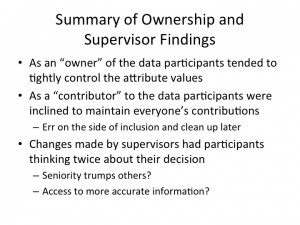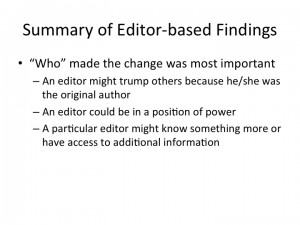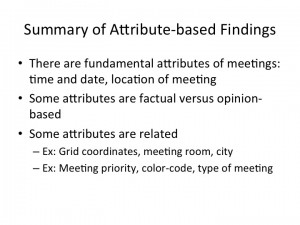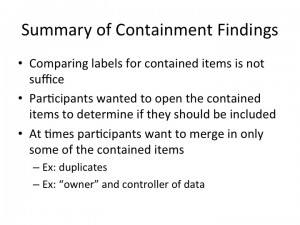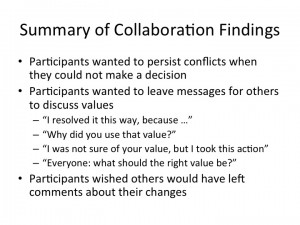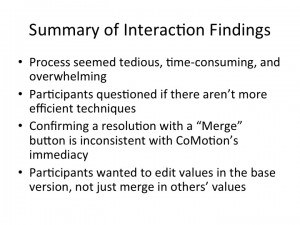Project Context:
With a new distributed, disconnect operations architecture, the user experience with the Command Post of the Future (CPOF) desktop software was going to be affected. One significant issue was user changes would become un-synchronized as an online and offline users edited the same field. This led to UI questions about which conflicting chances to convey and how.
Project Description:
This initial research project used a paper prototyping activity to explore how people approach various data conflict situations. It examined what information people use in making resolution decisions, as well as evaluated a conceptual design.
There were two types of prototypes that modeled the technical ways data conflicts can occur. There were also two types of tasks. Each task had a story describing the recent edits made by the participant and the network conditions that led to the data conflicts. To account for biases, each participant did both tasks, one with each prototype. A think aloud protocol was used as participants were asked to resolve the competing versions of the data. Each session lasted about an hour with two observers taking notes.
Each observation was placed on a Post-It note. An Affinity Diagram revealed six basic themes:
- Ownership & Supervisor findings
- Editor-based findings
- Attribute-based findings
- Containment findings
- Collaboration findings
- Interactions findings
User-centered design methods: Paper prototyping, Affinity Diagramming
Examples:
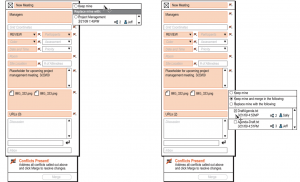
A paper prototype highlighted the fields with conflicting edits and presented options for resolving these edits.
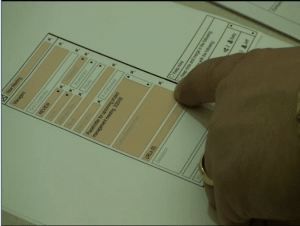
During the paper prototype activity, participants interactively made resolution choices, describing their thoughts and rationale.
